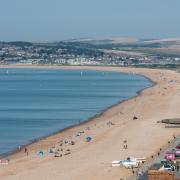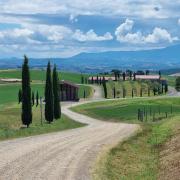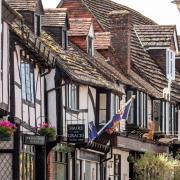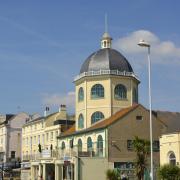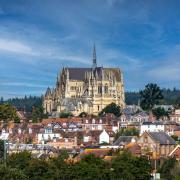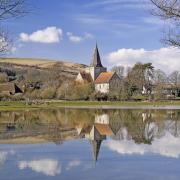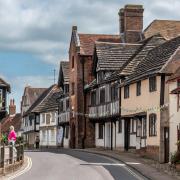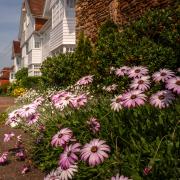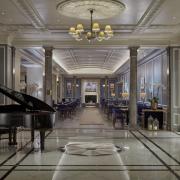Nestling in the South Downs between Eastbourne and Seaford, with a population of just 2,000, this picture postcard village has its own green, a cricket team, an interesting history and even a famous fictional character.

HOBB'S EARES
This meadow, known as Hobb’s Eares, is accessed from the gate at the back end of Friston Church and leads directly down to East Dean. It is a very popular place for dog walkers and in the springtime is a blaze of yellow buttercups.

UPPER STREET
This beautiful row of cottages and workshops in Upper Street is peak Sussex, faced with flint and exuding an air of fortitude and permanence; it’s the kind of thing that jigsaws are created from.

THE TIGER INN
One of my favourite-ever village greens is this one here in the centre of East Dean, a charming, serene spot. The Tiger Inn dominates one side, with the war memorial and flagpole in the centre and flint cottages to one side. It is so undeveloped, there is even a large walled-off area of allotments, right next to Sherlock Holmes’ ‘retirement’ home.

SHERLOCK HOLMES
The great fictional detective Sherlock Holmes, created by Arthur Conan Doyle in the late 19th century, is mentioned in Guinness World Records as the most portrayed human literary character in film and television history. When the character ‘retired’, speculation was rife about where he ended up, but this house on the village green is generally considered to be the place. It now operates as the main office for The Gilbert Estate, which owns and rents out a number of the village properties, all identifiable by the colour scheme on the front doors and window-frames.


CHURCHYARD
There is a tapsel gate at the southern end of the churchyard. These gates are a uniquely Sussex thing, designed to pivot on a central column through 90 degrees before coming to a stop at two fixed points. They were designed to keep cattle out of churchyards. There are only six left in the whole county and the parish of East Dean and Friston has two of them.

BIRLING GAP
A mile south of the village is Birling Gap where you will find just four Coastguard cottages left from the original eight built in 1878. It’s an iconic landmark but erosion is difficult to fight against and the sea is merciless.

SEVEN SISTERS
Looking west toward Seaford from Birling Gap is the bulk of the white cliffs of the Seven Sisters. It’s noticeable even in this picture the sections where the chalk has fallen onto the beach. It’s a continuous process. The thinness of the topsoil here is striking.

RAF FRISTON
This squat concrete structure in the middle distance is all that remains of RAF Friston on farmland between Friston and Cuckmere. In the latter stages of the war, it was not uncommon to see upwards of 100 aircraft on the land at any one time.

Sheila Hay: This is a beautiful place. It’s bucolic, wonderful, quiet and calm. Everyone meets in the village hall, lots of visitors come here so there’s a lot of interaction. It’s a little bubble of loveliness. You can feel guilty a little bit sometimes, as you sit in your living-room listening to the radio, hearing about all this terrible stuff going on, but there’s no evidence of it here. That might seem a little insular, but it’s fair enough in a place like this.’

Sandra Field: ‘We have one of the best sunshine records on the south coast. We’ve got the sea, the forest, the Downs and the city.
Deanna Kisler: ‘We’ve always had tourists, but recently Birling Gap and the village green can be absolutely heaving. It’s good for us as a business and by late afternoon, they’ve all gone and we can go to the pub. I think the South Downs being a National park has made a difference, and now we have The Turner Prize coming to Eastbourne.’






